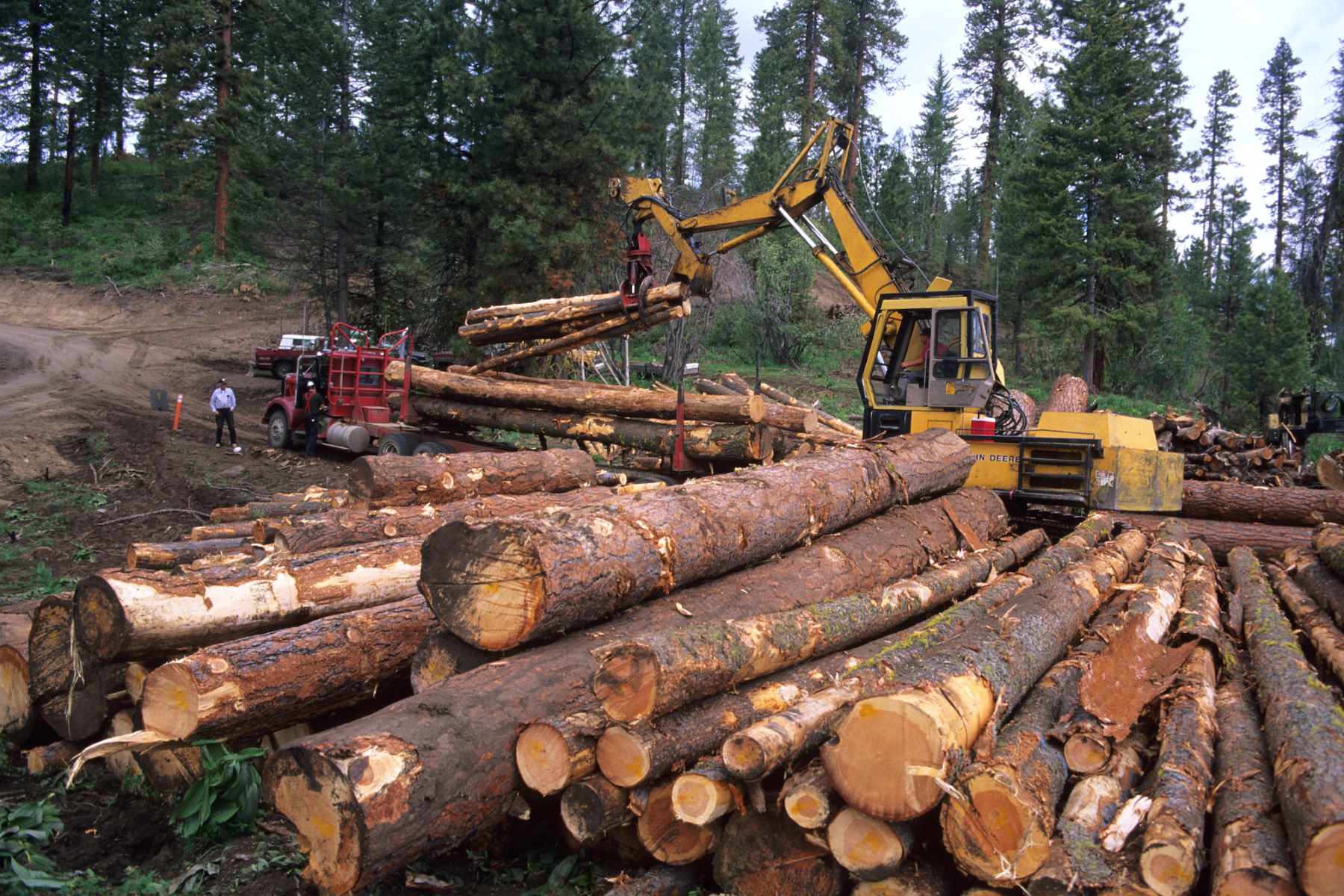
Welcome to our comprehensive guide on timber! Timber, also commonly known as wood, is one of the oldest and most versatile materials known to mankind. It has played a crucial role in the development of civilizations throughout history, serving as a primary building material for structures of all shapes and sizes. From furniture and housing to paper and fuel, timber has countless applications in various industries.
In this article, we will explore 20 fascinating facts about timber that will give you a deeper understanding of this remarkable resource. Whether you have an interest in woodworking, construction, or simply want to expand your knowledge, these facts will provide insights into the world of timber. So, let’s dive in and discover the wonders of timber!
Key Takeaways:
- Timber is a strong, eco-friendly material that lasts for generations, reduces energy consumption, and promotes sustainable forestry practices. It’s versatile, beautiful, and supports a healthier environment.
- Timber is a cost-effective, customizable, and resilient building material with natural insulation, fire-resistant properties, and low carbon footprint. It enhances air quality, reduces noise, and adds warmth to indoor and outdoor spaces.
Timber is a versatile and sustainable building material.
Timber has been used for centuries in construction due to its strength, durability, and aesthetic appeal. It is a renewable resource, making it an environmentally friendly choice for building projects.
Timber can be sourced from various types of trees.
There are numerous tree species that can be used for timber production, including oak, pine, cedar, mahogany, and many more. Each species has its own unique characteristics and properties.
Timber is a natural insulator.
Timber has excellent thermal insulation properties, which helps to regulate temperature and reduce energy consumption in buildings. It also provides sound insulation, creating a quieter and more comfortable environment.
Timber is highly customizable.
Timber can be easily modified and shaped to fit specific design requirements. It can be cut, carved, and joined together to create intricate and unique structures.
Timber has a high strength-to-weight ratio.
Despite being lightweight, timber is incredibly strong. It has a high strength-to-weight ratio, making it an ideal choice for structures that need to withstand heavy loads.
Timber is resistant to seismic activity.
Timber structures have shown to be resistant to seismic activity due to the flexibility and strength of the material. This makes timber a reliable choice in earthquake-prone areas.
Timber is biodegradable.
Unlike many other building materials, timber is biodegradable and will naturally decompose over time. This reduces the environmental impact and promotes sustainability.
Timber has natural fire-resistant properties.
Timber has inherent fire-resistant qualities, making it a safer material compared to other options. It chars when exposed to fire, creating a layer of protection that slows down the spread of flames.
Timber has a long lifespan.
When properly maintained, timber structures can last for generations. With regular care and maintenance, timber can resist decay, moisture, and pests, ensuring its longevity.
Timber is aesthetically pleasing.
The natural beauty and warmth of timber enhance the visual appeal of any space. It provides a sense of warmth and natural elegance, creating a welcoming atmosphere.
Timber can be recycled and repurposed.
Timber can be recycled and repurposed for other projects, reducing the need for new timber production. It can be transformed into furniture, flooring, or even used as biomass for renewable energy.
Timber has a low carbon footprint.
Timber production requires less energy compared to other construction materials, resulting in a lower carbon footprint. Using timber in building projects can help reduce greenhouse gas emissions.
Timber is cost-effective.
Timber is generally more affordable compared to other building materials, making it a cost-effective choice for construction projects. It is readily available and can be sourced locally in many regions.
Timber can improve air quality.
Timber has the ability to regulate indoor humidity levels, improving air quality and reducing the risk of respiratory problems. It also has a natural ability to absorb and store carbon dioxide.
Timber is easy to work with.
Timber is a versatile material that is easy to cut, shape, and join. It can be easily adjusted on-site, reducing construction time and costs.
Timber can withstand extreme weather conditions.
Timber has natural resilience and can withstand harsh weather conditions such as heavy rain, strong winds, and temperature variations. Proper treatment and maintenance can further enhance its durability.
Timber is suitable for both interior and exterior use.
Timber can be used for a wide range of applications, including flooring, decking, siding, furniture, and structural components. It adds warmth and character to both indoor and outdoor spaces.
Timber has excellent acoustic properties.
Timber helps to absorb sound vibrations, reducing noise pollution and creating a more peaceful environment. It is commonly used in auditoriums, recording studios, and home theaters.
Timber is resistant to electrical conductivity.
Timber is a poor conductor of electricity, making it a safer material in electrical installations. It reduces the risk of electrical shocks and provides insulation from power lines.
Timber supports sustainable forestry practices.
The timber industry promotes sustainable forestry practices, ensuring the responsible management of forest resources. This helps to maintain healthy ecosystems and protect biodiversity.
Timber is an incredibly versatile, sustainable, and reliable building material. With its numerous benefits and wide range of applications, it continues to be a popular choice in construction projects. From its natural beauty to its environmental advantages, timber offers a timeless and eco-friendly solution for creating functional and aesthetically pleasing spaces. So, next time you consider a building or renovation project, keep in mind the incredible 20 Timber Facts and the positive impact timber can have on our environment and overall well-being.
Conclusion
In conclusion, timber is an incredibly versatile and valuable material with a rich history and countless applications. From its sustainable sourcing to its durability and aesthetic appeal, timber continues to be a popular choice in construction, furniture making, and various other industries. With its natural beauty, strength, and environmentally friendly qualities, it is no wonder that timber remains a timeless favorite.
FAQs
Q: Is timber a sustainable material?
A: Yes, timber is one of the most sustainable materials available. When sourced responsibly from well-managed forests, timber can be harvested in a way that promotes regrowth and maintains ecological balance.
Q: How long does timber last?
A: The lifespan of timber depends on various factors such as the type of wood, the quality of construction, and the conditions it is exposed to. Generally, well-maintained timber can last for decades, even centuries.
Q: Can timber be used in wet environments?
A: Yes, certain types of timber, such as teak and cedar, are naturally resistant to water and rot. These woods are often used for outdoor applications, such as decking and siding.
Q: Does timber require special care and maintenance?
A: Timber does require some routine maintenance to preserve its beauty and extend its lifespan. This may include regular sealing, staining, or painting to protect against moisture, UV radiation, and pests.
Q: What are the common applications of timber?
A: Timber is used in a wide range of applications, including construction (beams, columns, flooring), furniture making, cabinetry, decking, fencing, and crafting musical instruments.
Q: Can timber be recycled?
A: Yes, timber can be recycled and repurposed. It can be transformed into new products or used as a biofuel source, reducing the demand for new timber and minimizing waste.
Timber's incredible qualities make it a top choice for builders and homeowners alike. From its sustainability and versatility to its natural beauty, timber offers a wide range of benefits that continue to impress. If you're curious to learn more about this fascinating material, why not explore some related topics? Discover the rich history and exciting future of the Portland Timbers soccer team, or dive into the whimsical world of Olly Timbers in "Welcome to the Wayne." For a deeper understanding of the Portland Timbers 2 football club, check out our collection of intriguing facts that will leave you wanting more.
Was this page helpful?
Our commitment to delivering trustworthy and engaging content is at the heart of what we do. Each fact on our site is contributed by real users like you, bringing a wealth of diverse insights and information. To ensure the highest standards of accuracy and reliability, our dedicated editors meticulously review each submission. This process guarantees that the facts we share are not only fascinating but also credible. Trust in our commitment to quality and authenticity as you explore and learn with us.


